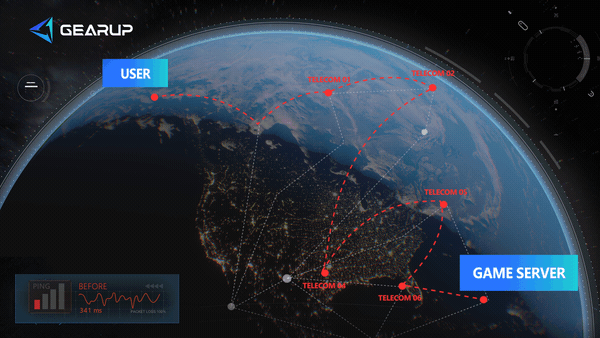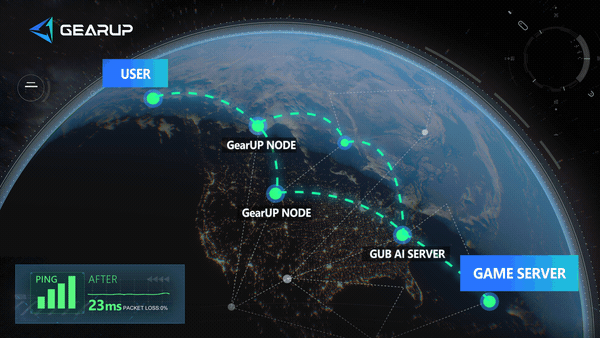How to Fix Lag in R.E.P.O.
R.E.P.O. is an online cooperative horror game developed by Swedish team semiwork, released in Early Access on February 26, 2025, via Steam. Set in a post-apocalyptic world, players are tasked by an AI to retrieve valuable objects while facing hostile creatures in the ruins. The game emphasizes realistic physics, teamwork, and upgradable weapons. Since its launch, R.E.P.O. has garnered a 96% approval rating on Steam and peaked at over 70,000 concurrent players.
However, the online mode's focus on low latency has left some players struggling with lag. This guide aims to help you tackle R.E.P.O. lag and enhance your gaming experience.
Why Does Lag Occur Frequently in R.E.P.O.?
Lag is a common issue, but its causes can be diverse. Beyond the most frequent culprit—network issues—it can also stem from software or hardware factors. Generally, these causes can be categorized into the following five aspects:
- High Server Load: With a peak of over 70,000 concurrent players, the game’s servers can become overloaded, leading to delays and lag.
- Network Instability: Unstable internet connections or high ping can cause interruptions in data transmission between players and the server.
- Geographical Distance: Players connecting from distant regions may experience higher latency due to longer data travel times.
- Hardware Limitations: Older or underperforming hardware may struggle to process the game’s realistic physics and detailed environments smoothly.
- Background Applications: Running other applications or downloads in the background can consume bandwidth and system resources, contributing to lag.
Common Lag Symptoms in R.E.P.O.
If you experience any of the following issues, your connection might be causing lag in R.E.P.O.:
- Delayed Movement: Your character doesn't respond immediately or teleports unexpectedly.
- Item Interaction Glitches: Objects drop randomly or get "stuck" in mid-air.
- Strange Enemy Attacks: You take damage even after dodging attacks.
- Random Disconnections: You frequently get kicked out of the game or see "Connection Lost" messages.
Effective Solutions to Fix Lag in R.E.P.O.
1. The Ultimate Gaming VPN - GearUP
The first step to solving network lag is to address it head-on, and we recommend the expert in this field: GearUP. You may have heard of it in other games.
GearUP can help you find the optimal node to improve connectivity and resolve various network issues, including lag and multiplayer connection failures, through its exclusive adaptive intelligent routing technology—all without requiring any network configuration from players.
GearUP can process R.E.P.O.'s data independently without affecting the connection and usage of other applications, nor does it impact your computer's performance. You can easily master it by following these steps:


Step 1: Click this button to download GearUP.
Step 2: Search for R.E.P.O.
Step 3: Select a server. You can connect to and switch between global R.E.P.O. server regions.
Step 4: Confirm the boost effect. You can view the ping, packet loss rate, and real-time network status. Then, you’re ready to launch R.E.P.O.!
2. Upgrade Your Hardware
If your R.E.P.O. experiences noticeable frame drops, texture glitches, or crashes/freezes, the issue may not stem from your network but rather your hardware. We recommend implementing the following optimizations:
- Ensure your PC meets or exceeds the game's recommended system requirements. Below are the system requirements.
- Upgrade components like your GPU, CPU, or RAM if they are outdated or underperforming.
- Use an SSD instead of an HDD to improve loading times and overall performance.
| Specification | Minimum Requirements | Recommended Requirements |
|---|---|---|
| OS | Windows 10 | Windows 11 |
| CPU | Core i5-6600 | Intel Core i7-8700 |
| RAM | 8 GB | 8 GB |
| GPU | GTX 970 | GTX 1070 |
| DirectX | Version 10 | Version 12 |
| Network | Broadband Internet Connection | Broadband Internet Connection |
| Storage | 1 GB available space | 1 GB available space |
3. Adjust In-Game Settings
- Lower graphical settings such as texture quality, shadows, and effects to reduce the strain on your system.
- Disable unnecessary features like motion blur or anti-aliasing to improve frame rates.
- Cap your frame rate to a stable level to prevent sudden drops in performance.
4. Update Drivers and Software
- Ensure your graphics card drivers, network drivers, and operating system are up to date to avoid compatibility issues and improve performance.
- Regularly check for game patches or updates from the developers to fix known bugs or optimize performance.
5. Close Unnecessary Background Programs
- Open Task Manager
- Press Ctrl + Shift + Esc on your keyboard
- Alternatively, right-click the taskbar and select "Task Manager"
- Identify Resource-Heavy Programs
- Click the "Processes" tab
- Sort by CPU, Memory, or Disk usage by clicking the column headers
- Close Unnecessary Programs
- Select the program you want to close
- Click "End Task" in the bottom-right corner
- For system processes, right-click and select "End Process Tree"
- Disable Startup Programs (Optional)
- Go to the "Startup" tab
- Right-click unnecessary programs and select "Disable"
- Check Background Services
- Go to the "Services" tab
- Right-click non-essential services and select "Stop Service"
FAQ about R.E.P.O. Lag
Q1: What is the difference between network lag and hardware lag?
Network lag primarily manifests as delayed character actions, stuttering, or teleporting, while hardware lag mainly appears as low FPS, slow loading, or black screens. However, severe network lag can sometimes cause an experience similar to frame drops.
Q2: Can increasing internet speed reduce lag?
Not necessarily. While faster internet may slightly reduce latency, the main cause of lag lies in node connections. ISPs typically don’t provide optimal routing nodes.
Q3: Why isn’t manual network configuration recommended for players?
Factors affecting lag are complex, and network configuration is even more intricate. Additionally, node selection cannot be resolved through local network settings. Therefore, GearUP is the most reliable and effective solution.
Q4: What is the difference between GearUP and a VPN?
| Feature | GearUP | Traditional VPN |
|---|---|---|
| Routing Focus | Targets only game traffic, leaves other apps untouched | Routes all internet traffic, including non-gaming apps |
| Adaptive Path Switching | Yes – switches nodes dynamically when packet loss is detected | No – fixed route unless manually changed |
| Server Coverage | 7500+ nodes in 180+ regions, gaming-optimized routes | Varies, often <100 nodes, not game-focused |
| Game Compatibility | Supports 2500+ games with dedicated game handling and updates | No specific optimization for games |
| System Resource Usage | Lightweight, doesn't impact CPU/RAM | Can slow down systems due to full-tunnel encryption |
| Ping Reduction | Yes – intelligent routing with anti-packet loss and real-time ping testing | Sometimes – but not consistent |
| Ease of Use | Click to boost, no config or manual selection needed | Requires VPN setup, manual server selection |
| Security Use Case | Not designed for anonymity or browsing protection | Yes – good for online anonymity, browsing security |
Conclusion
To survive in R.E.P.O., a smooth connection is crucial. GearUP significantly reduces lag, prevents packet loss, and optimizes your game connection, ensuring a seamless multiplayer experience. Combine it with a wired setup, optimized DNS, and playing at off-peak times for even better results. Don't let lag ruin your horror adventure—try GearUP today and enjoy R.E.P.O. without interruptions!
About The Author
The End

